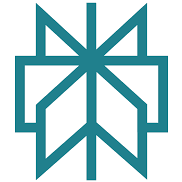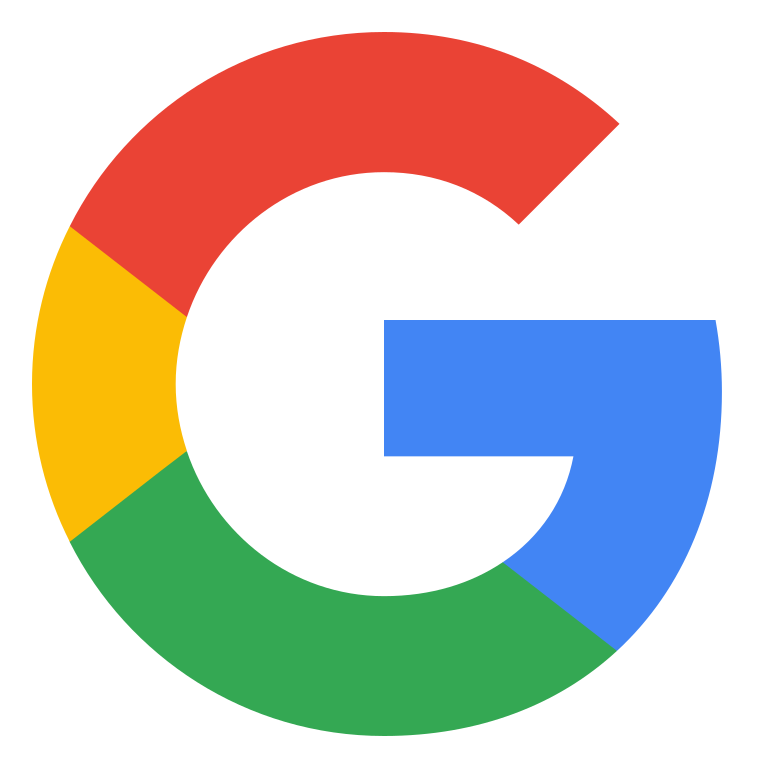The 80/20 rule gets applied to a lot of things in business, but none more important than customer retention. This rule states that 80% of your profits will come from 20% of your customer base but the only way to truly accomplish that is to keep the profitable customers around. If they leave, your profits vanish with them.
So in this article, we’ll show you the 10 best customer retentions tools, plus 11 different strategies and you can use to help improve customer retention. You’ll see why they work, and examples of a service or two that can help you achieve customer retention for your business.
Best Customer Retention Tools for 2024
1. HubSpot
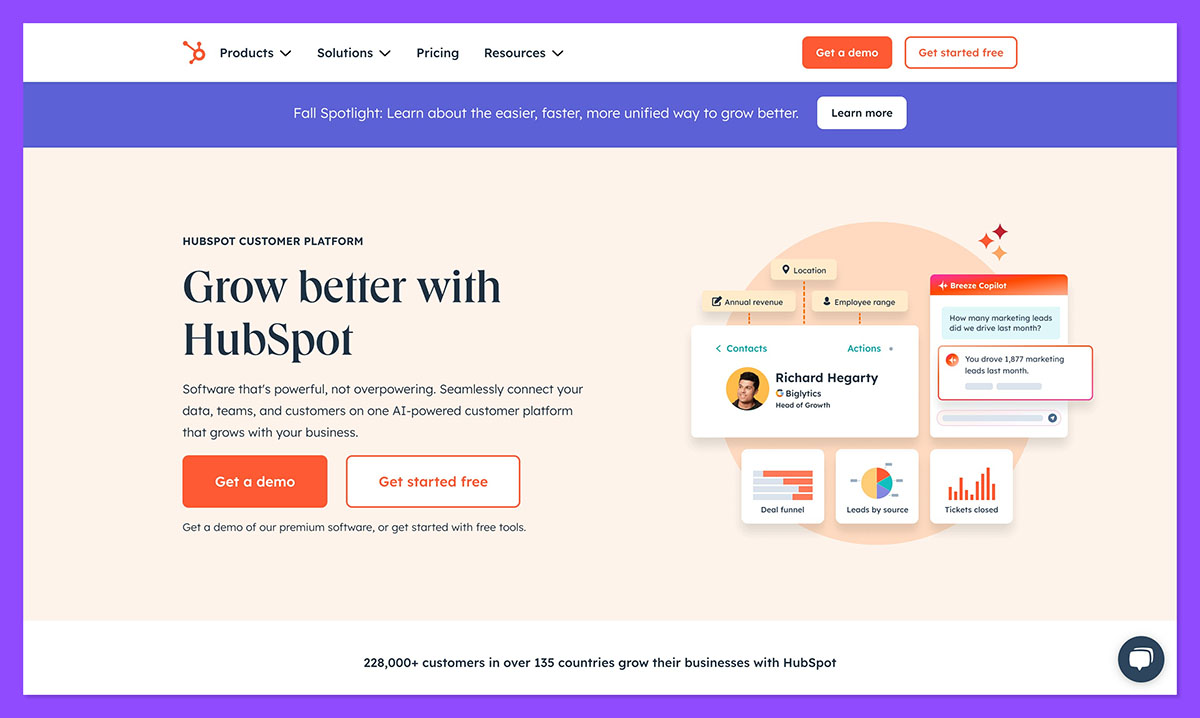
When I’m looking at customer retention tools HubSpot stands out for its full feature set. Its CRM brings marketing, sales, service and content management all in one place so I can have a 360 view of customer interactions.
The automation features save me time and reduce manual errors. I love that I can automate personalized emails and marketing campaigns and get customer engagement.
HubSpot’s analytics gives me valuable insights into customer behavior and preferences. I can make data driven decisions based on facts. The dashboard is easy to use with clear visuals that make it easy to interpret.
I can connect my other tools I use into HubSpot so everything flows smoothly. The platform is flexible with its customization options so I can build solutions for my specific needs.
One of the big pluses is the support and resources for users including detailed guides and fast customer service. This makes the platform more reliable and I can get help if I need it. Overall HubSpot is a great tool for managing and retaining customers.
2. Fenrand
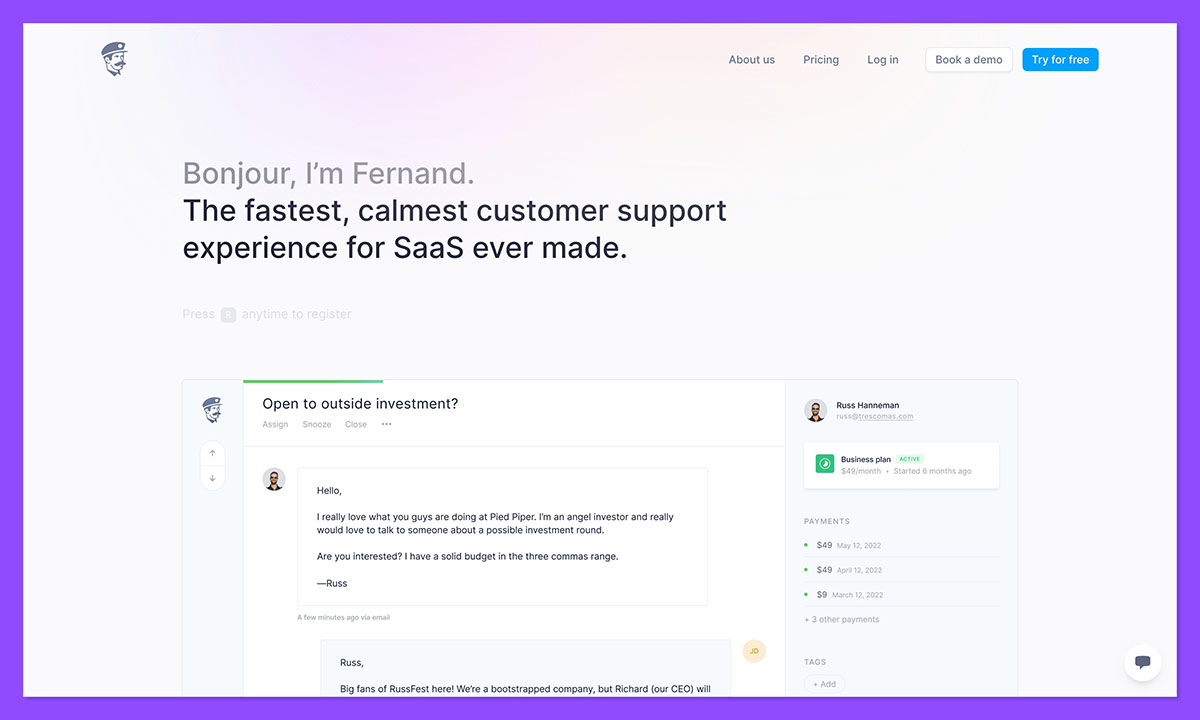
When I look at customer retention tools Fernand stands out for its laser focus on SaaS customer support. Its AI-powered platform brings smart replies, rules, and shortcuts all in one place so I can handle customer queries efficiently and calmly.
The automation features save me time with real-time syncing across screens. I love that I can create detailed rules and conditions for automated responses which helps reduce errors in customer communication.
Fernand’s native integrations give me valuable capabilities for payment processing and API connections. I can issue refunds directly from the interface and access customer metadata instantly which speeds up my workflow.
I can set up smart automations based on email content, language, and customer status so everything flows smoothly. The platform is affordable at $29 per user per month with all features included.
One limitation is the currently small number of third-party integrations, though they’re actively adding more. Despite this, Fernand is a solid tool for SaaS companies wanting to streamline their customer support.
3. Zoho CRM

Zoho CRM has the features to help me with customer retention. Its automation tools help me streamline customer communication which is key to engagement.
The platform gives me a 360 view of customer interactions. I can track customer history and provide personalized service which is important to me when retaining customers.
Zoho CRM’s integration options are great. I can connect it to email and customer service tools and centralize my workflow.
And its reporting and analytics gives me insights into customer behavior. I can see buying patterns and trends so I can make better decisions.
The interface is simple so I can navigate through all the features without hassle. I can focus on strategy not technicalities.
4. Intercom

Intercom is a great tool for customer retention through personalized communication. I like its platform that has messaging, live chat and automation. I can engage with users easily.
The tool allows me to track user behavior so I can interact based on customer actions. With targeted messaging and automated workflows I can reach out at the right moments. This personalization builds stronger relationships with my audience.
Intercom also has in-depth analytics so I can see customer interactions. I can make data driven decisions on how to adjust my strategy. By looking at these data points I can optimize my communication.
And the platform integrates with other apps so my workflow is smooth. I can plug it into my existing systems easily. So when I manage customer interaction and support it’s seamless.
5. Salesforce
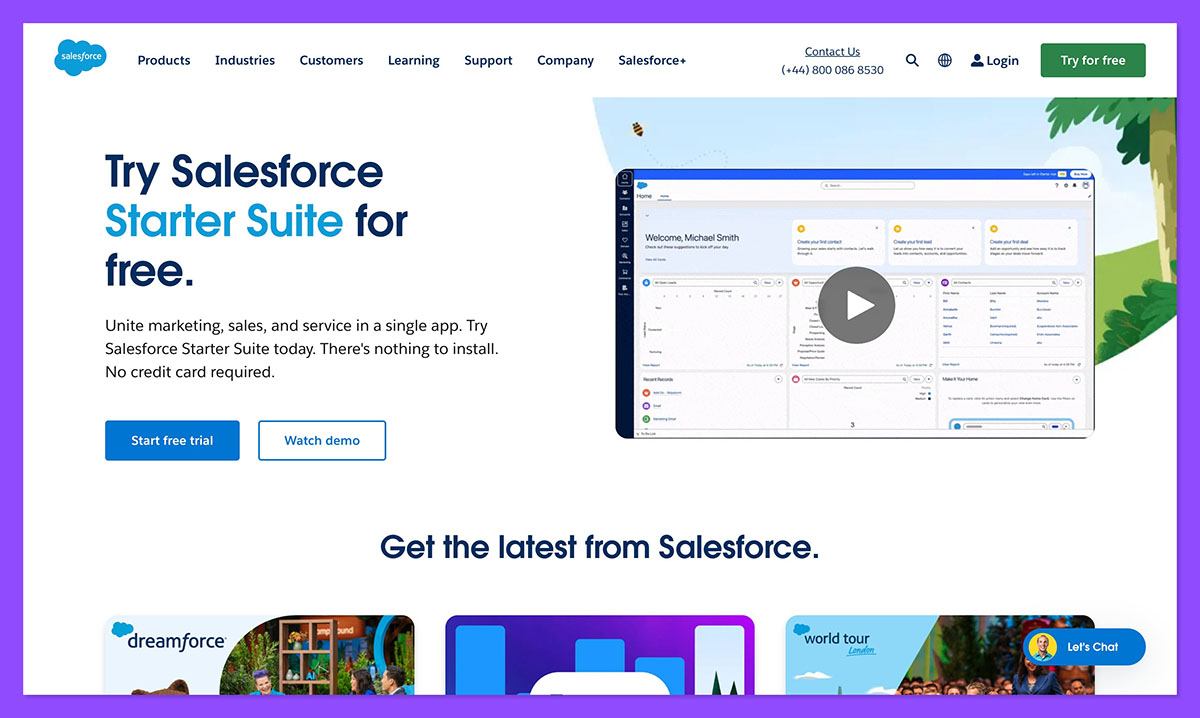
I like Salesforce for customer retention. Its full CRM features allow me to manage customer relationships. The integration options connect all my business processes so I can work more efficiently.
The customization options in Salesforce let me build solutions for my specific business needs. This flexibility is key to addressing customer needs and retention rates.
I can track key customer interactions and look at the data to get insights. Data driven decisions help me keep strong relationships with my customers.
The automation in Salesforce saves me time by doing repetitive tasks. I can focus on high value activities and allocate more resources to customer experience.
6. Pendo
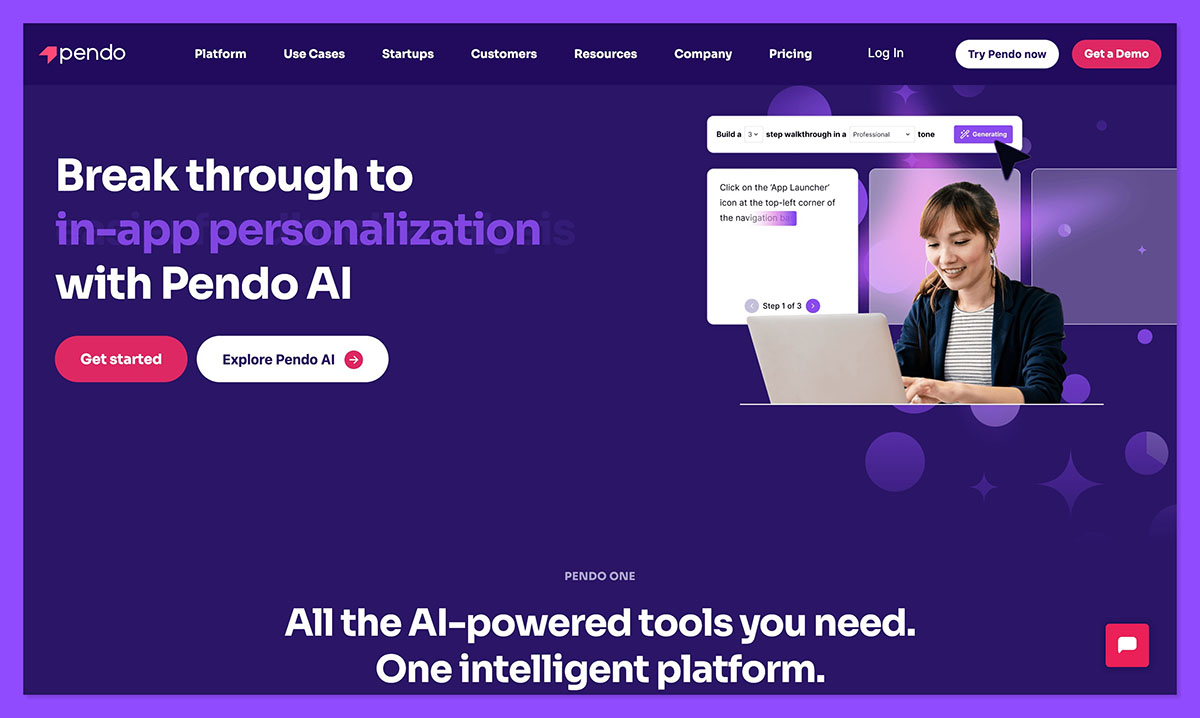
I like Pendo for understanding user behavior and customer retention. It has detailed analytics so I can track and see user interactions within my products. This is key to making data driven decisions.
I use Pendo’s in-app messaging a lot. I can engage with customers directly by sending targeted messages and guides. This makes users feel supported and informed.
I also like that I can collect feedback without disrupting the user experience. I can combine feedback with usage data so I can prioritize product updates that match customer needs.
Pendo also integrates with my existing tech stack so I can implement it without major hassle. This is a big plus for workflow efficiency.
And with Pendo’s user segmentation I can build experiences for different user groups which makes it more relevant and satisfying. I can create personalized journeys has never been easier for me.
Overall Pendo is a great tool for customer retention.
7. Zendesk
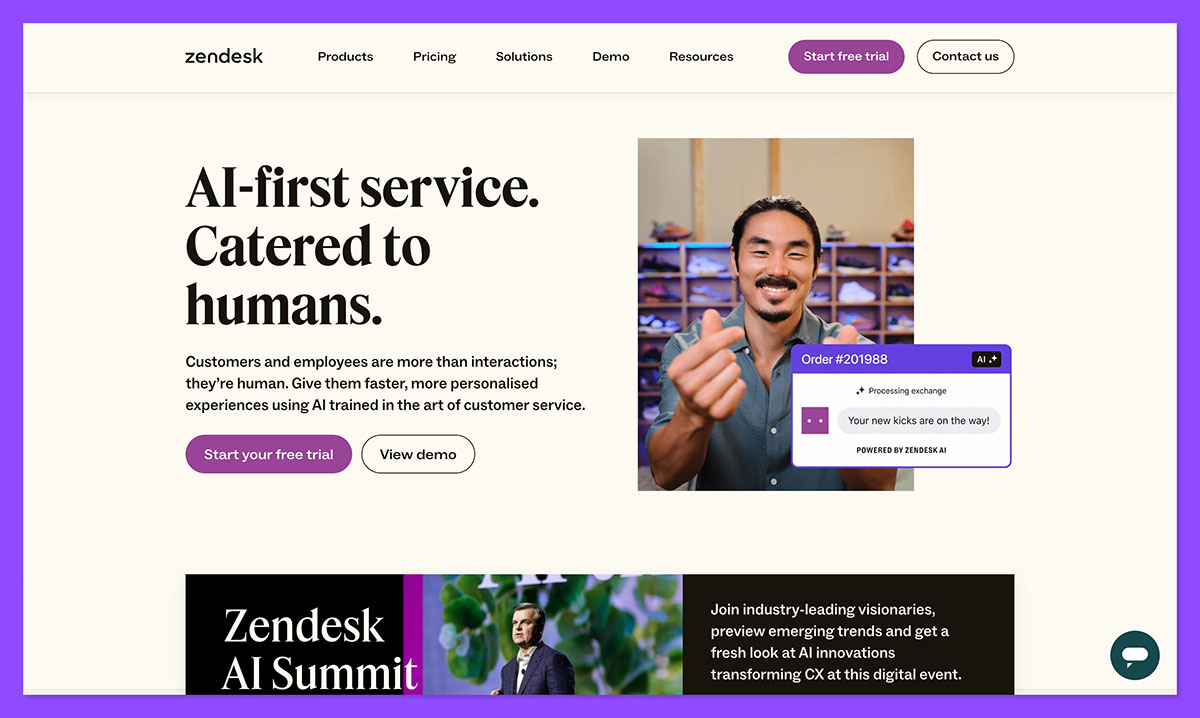
I like Zendesk for customer retention. It aggregates multiple support channels (email, chat, social media) into one platform so I can manage customer interactions fast and address their concerns.
Zendesk’s ticketing system is great for tracking and resolving customer queries. I can prioritize tasks and nothing falls through the cracks. Automation features like triggers and macros do repetitive tasks so I can focus on building long term customer relationships.
Another plus is the analytics and reporting. It gives me insights into customer behavior and service quality so I can see where to improve. Customizable dashboards let me track the metrics that matter most.
With Zendesk I also get its app marketplace. It allows me to integrate with third party tools to extend its core functionality. I can tailor the system to my business needs without needing technical skills.
Security and data protection is strong with Zendesk so I can sleep at night when handling customer sensitive data. It’s compliant with major regulations and has features like single sign on and data encryption.
8. Totango
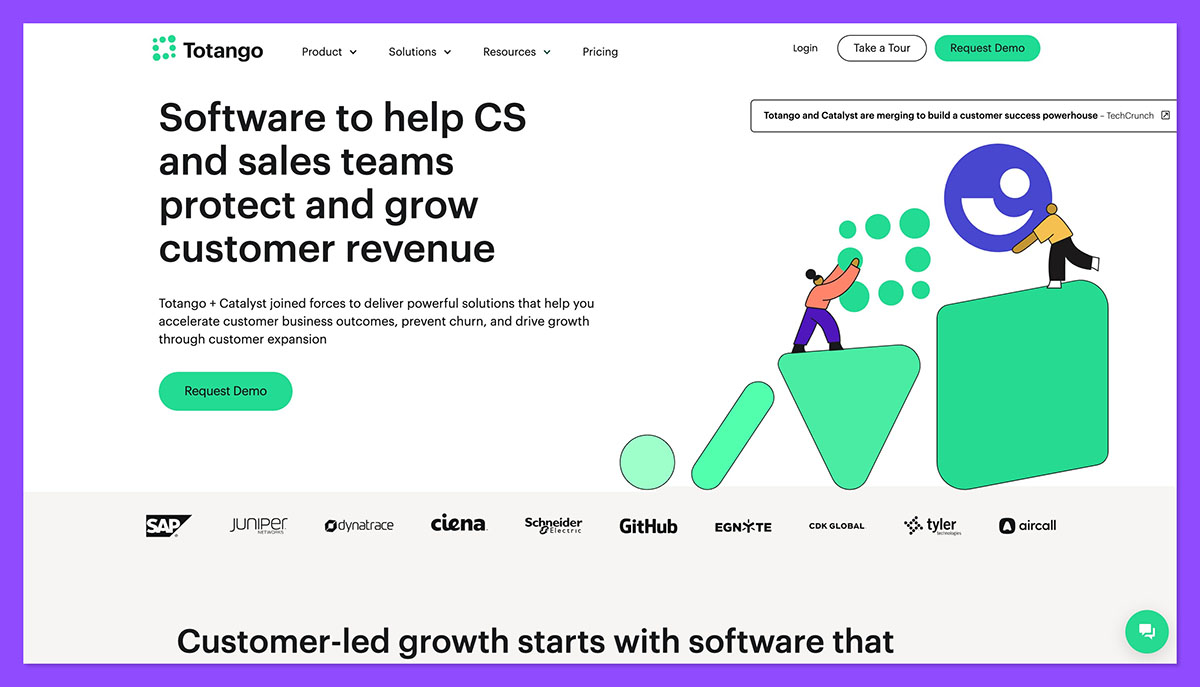
I like Totango as a customer success platform for building long term customer relationships. It has features to help customer retention by giving me detailed insights into customer behavior and engagement.
As I navigate Totango I like that I can segment my customer base with precision. This allows me to target specific customer groups with personalized actions and improve retention rates.
The real time analytics allows me to track customer health and satisfaction in real time. I can address issues as they arise by getting alerted on negative customer experiences.
Totango’s integration with other business tools is a plus. It integrates with existing systems so workflow is seamless. This allows me to have a single view of customer data so I can make better decisions.
Also Totango has automated workflows that streamline my processes. These workflows do manual tasks so I can focus more on strategic initiatives to build customer loyalty.
I like the UI is intuitive so minimal training is required. Onboarding is fast and efficient so my team can use it effectively.
9. Gainsight
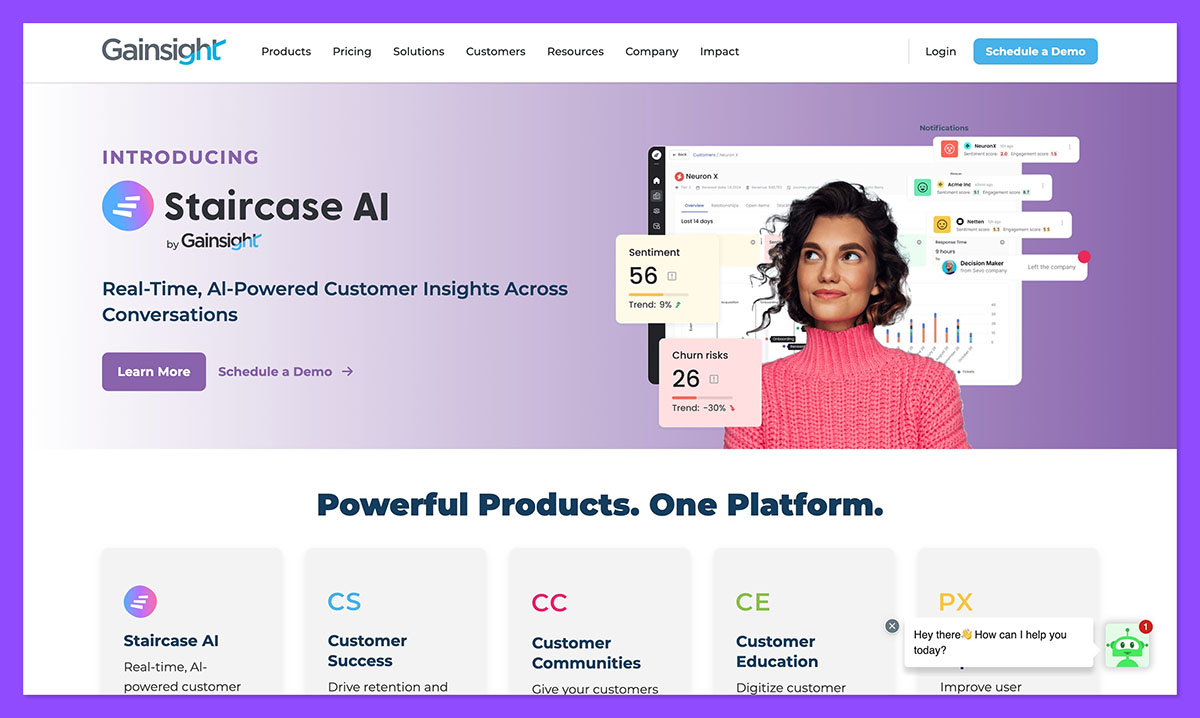
I like Gainsight for customer retention. The UI and features are great for any business that wants to improve customer satisfaction.
One of the things I like most about Gainsight is it gives me deep insights into customer behavior so I can tailor my strategy to customer needs and increase loyalty and engagement.
I also like the health scoring. It gives me a clear view of customer status so I can address issues before they become big. This predictive capability is key to healthy customer relationships.
Also Gainsight’s automation features save me time and ensures consistency in communication. With automated workflows I can manage customer interactions smoothly and efficiently.
Overall Gainsight stands out for its analytics and practical features. These allows me to make better decisions and better customer retention outcomes.
10. Insightly
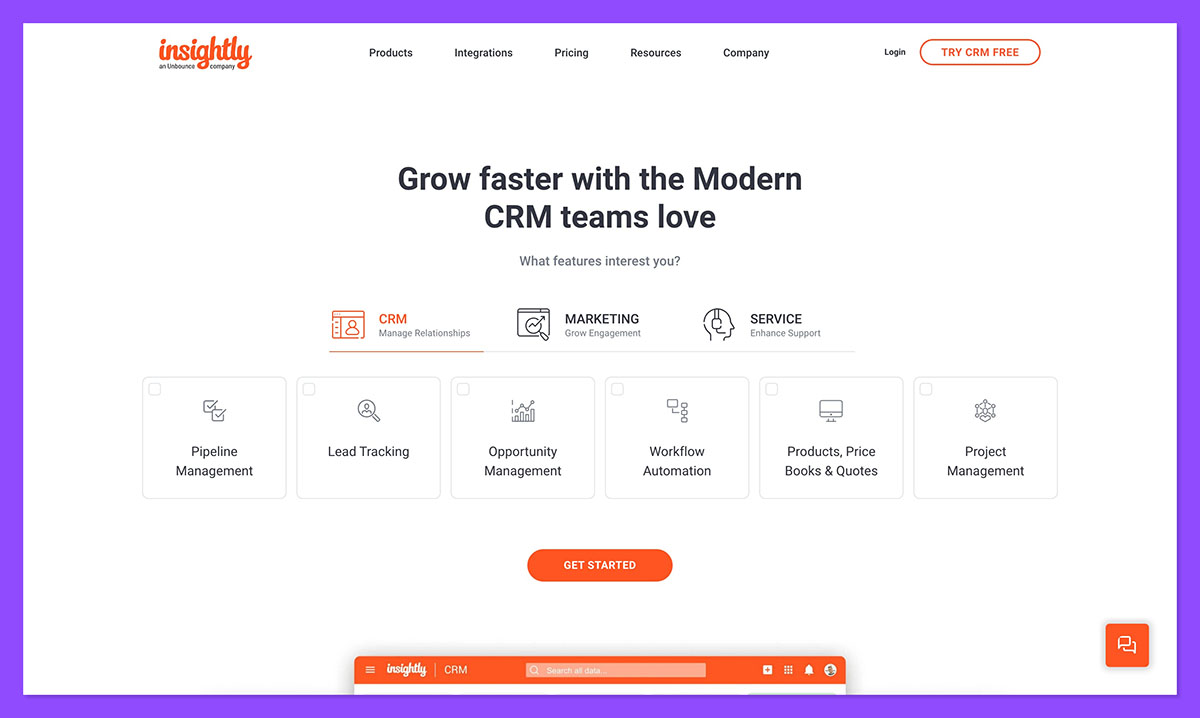
I like Insightly for customer retention. It’s a powerful CRM tool. The UI is simple for project management so customer interactions are organized and effective.
Insightly’s integration with other platforms is useful. I can have a single source of truth across multiple tools and data sources. With automation I can automate repetitive tasks and follow up with clients consistently.
The reporting and analytics tools of Insightly gives me valuable insights into customer behavior. By looking at the trends I can tailor my strategy to customer needs more accurately. Customizable dashboards shows me the data in a way I can track progress and KPI’s.
From lead to long term customer relationships Insightly supports all the way. It’s a tool that helps me stay connected with my clients.
11. SugarCRM
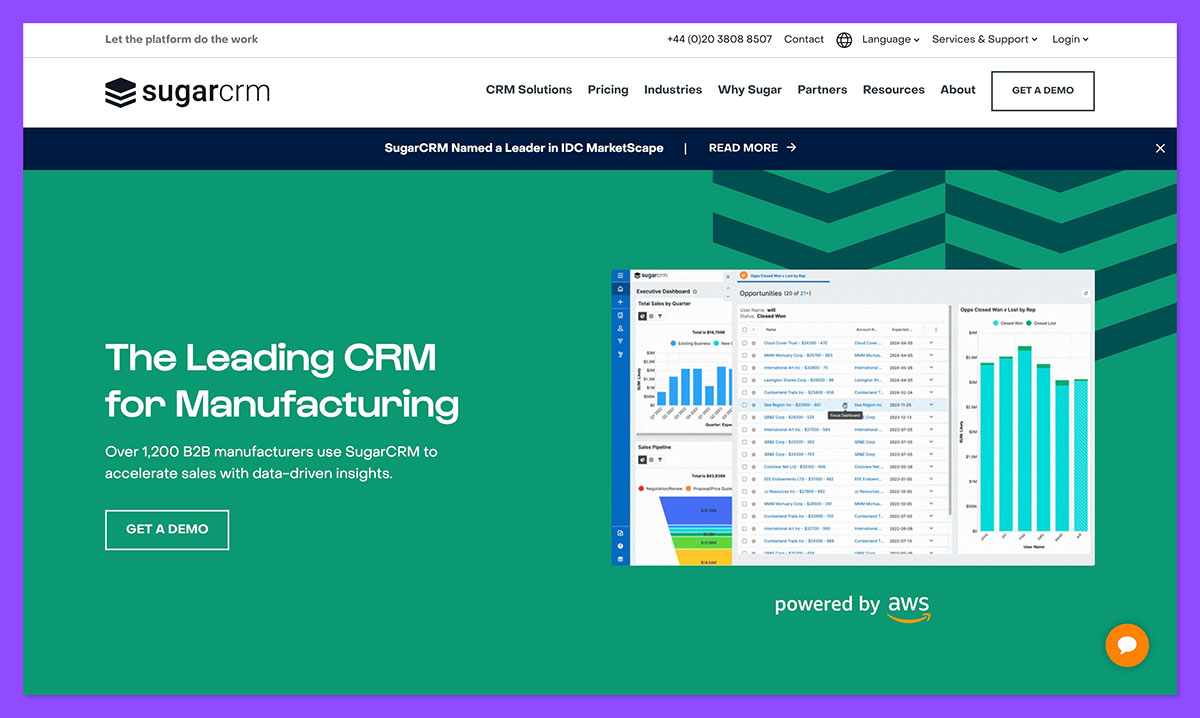
When I look at SugarCRM what I like is its flexibility in managing customer relationships. It’s a powerful tool with lots of customization options. I like this for businesses with unique needs. The ability to shape the CRM to fit my workflow is a big plus.
The UI is intuitive and user friendly. The clean design makes it easy to navigate through the features without much effort. I’ve seen how this can boost productivity by reducing time spent on administrative tasks.
One of the things I like is SugarCRM’s reporting. The tool gives me deep insights into customer behavior and interactions. I can make data driven decisions which is key to improving customer retention strategies.
I also notice SugarCRM’s emphasis on team collaboration. It integrates seamlessly with other platforms so communication and data sharing is easy. This makes it easy to keep everyone on the same page and aligned to the same goals.
And the platform has good support and resources. Active community and tons of documentation. I’m never left hanging whether I’m troubleshooting or optimizing.
What are the Best Customer retention Strategies?
1: Customer Loyalty Programs
Customer loyalty programs are the lowest of the low hanging fruit, making them very accessible to most ecommerce merchants to implement.
They add value over time to loyal customers who make purchases at your business by giving them the “VIP treatment” through points, free rewards, or special add-ons. Because of this loyalty they build up with your store, it becomes harder for your competition to poach your biggest spenders.
Studies have shown that customers are 82.4% more likely to shop at businesses that have a rewards program:
Studies have also shown that offering a broad range of rewards is best, although discounts and free items are the clear winners.
Loyalty programs are also a way that you can reward customers for leaving positive reviews, referring friends, or sharing your posts on social media. It all adds up over time.
In essence, you’re retraining your customer’s mind to see your brand as a positive and value-adding experience in their life.
But how do you start a loyalty program? That sounds like a lot of work.
Thankfully, there are services out there that can help you.
For example, a brand like TapMango might be a good option for brands that have both an online and offline presence.
They offer in-store and physical loyalty programs as well as online options to keep you in your customers’ minds.
But, there are plenty of other options out there that can help you no matter what you sell or where you sell it. Start exploring the idea of rewarding loyal customers, then, once you build your system, your customers will thank you and be more likely to stick around your business a little longer.
2: A/B Testing
A/B testing is a thoroughly tested way to improve your online presence and keep your customers around in the long run. It touches on every aspect of your business, from your content and product pages to your shopping cart abandonment and retargeting ads so it’s no surprise that conducting A/B tests can help you increase retention, as long as you know what to test.
There are plenty of tools that can help you A/B test and improve your website or app’s user experience.
For instance, check out a service like Optimizely. They’ve helped a wide range of brands incrementally improve their online presence in a way that boosts sales and retention.
Other options include VWO, or AB Tasty, to name a few. With the proper A/B testing tool, you’ll be much better prepared to improve retention and your overall user experience.
3: Content Personalization
Personalizing your messages and content can help you create a value-laden brand that customers will want to stay involved with. This includes your blog, product pages, and even video content.
But personalization requires the ability to easily capture and analyze data in a way that’s effective without too much effort. Having names, emails, or demographic information is only useful if you don’t have to dig to turn it into personalized content.
4. A Solid CRM Strategy
A Customer Relationship Management (CRM) tool may seem obvious but the point is that you can’t do the previous tip, or many of the others on this list, without one. That’s why CRM users see an average increase of 27% in their retention due to their CRM.
So while the benefits do extend outside of retention, there’s plenty you can do to help boost it with a CRM.
There is no shortage of options when it comes to CRM tools, from Salesforce to HubSpot, or ActiveCampaign. Each also comes with an expansive suite of tools that can help you grow your brand.
5. Customer Support Helpdesk
Helpdesk software might also seem obvious, but not for the reasons you’re thinking.
For example, many offer a live chat software or self-service content library option that helps you deal with customer issues quickly and accurately. Helping customers find and fix their own problems frees your team up to focus on growing your store.
Otherwise, if and when you do connect personally, you’ll be armed with CRM and past customer data to better serve each one — and that level of support shows you actually care.
So as you would expect, improving your customer service in these areas can help significantly boost retention.
There are plenty of places to look for good helpdesks to help improve your customer retention. Many CRMs have a built-in helpdesk that offers an attractive all-in-one service for your business, however, if CRMs aren’t your thing, or if you need other options, check out services like Freshdesk, Zendesk, or Help Scout.
6. Improve Your Onboarding
Unfortunately, there are plenty of reasons why customers might pass up your business but one of the worst occasions is when someone makes a purchase or subscribes to your product and then decides to leave your brand for good.
These types of customers are known as “drive-by” customers, as they’re a one-and-done interaction that usually never returns.
Studies have shown that these types of customers leave for a number of reasons, usually revolving around not seeing the value in your product, or just not understanding it.
You can avoid this lack of understanding by improving your onboarding process. This helps customers learn how to use your product and clearly see value in what you’re offering.
7. Exit Interviews
Speaking of churn, there are more ways than one to try to reduce it.
One good way is to try to use exit interviews or surveys to capture the reasons why your customers choose to leave.
Then, you can use that information to improve your product, service, or whatever your customers indicate. This helps you find your blind spots and improve retention and is a fairly simple addition for the most part.
Use a service like Typeform to send out surveys to customers (or former customers) so they can rate your store, service, or products.
However you decide to conduct the interviews, the important thing is that you get information from your former customers.
By knowing why they left, you can improve retention by shoring up your services and mitigating your future customers’ pain points.
8. Chatbots & Facebook Messenger Bots
Chatbots are a relatively new phenomenon, but there’s no denying that they can be a huge asset to customer retention efforts.
For example, your team can’t always get back to someone who needs immediate help when they send an email or a Facebook message but since a chatbot is automated and instantaneous, they can provide prompt service to anyone who needs it.
Studies have already shown that chatbots are retaining customers much longer than other comparable technologies.
Plus, one of the added benefits of these chatbots is that they can be added to both your website and your Facebook profile now.
Early adopters of Facebook Messenger marketing efforts see open and response rates similar to the early days of email marketing.
So where can you turn for a reliable chatbot? A great option is MobileMonkey, a creation by WordStream founder, Larry Kim. They’ve got an intuitive, bot-building platform and plenty of resources to help you build your chatbot into a real game-changer.
With a tool like this at your disposal, it will be that much easier to engage on a platform that your audience is already using.
9. Gamification
Sometimes, all it takes to keep your audience engaged and happy is a gamified customer experience.
Using gamification, you can subtly push customers to complete actions that make your brand experience more enjoyable. It also incentivizes further purchases by adding a sense of progression and competition that keeps users coming back.
Elements like leaderboards, badges, and status updates help customers compare their progression to others. When incorporated with other retention efforts like loyalty programs and email promotions, this can be a significant way to improve lifetime value.
If all of this sounds a little difficult, it’s because it can be without the right tools.
Consider looking into a service like Woobox if you want to go this route. They offer the ability to create contests and campaign-driven activities that help users engage with your brand and share with their friends. It’s a great way to get comfortable with gamification basics and improve your customer retention in the long run.
10. Email Marketing
Email marketing is still a viable growth channel, except, not the old, boring, one-and-done newsletter approach. Research has shown us that sending loyalty emails can still boost revenue through better retention.
The trick, of course, is that you’re pulling in customer data when building your email list. That way, you’re able to segment messages to each user group, giving people a reason to keep an eye out (as opposed to hitting the spam button). For example, an option like GMass can even let you send customized emails without leaving your Gmail account.
One of the major benefits of GMass is that it sends your emails as a mail-merge campaign in Gmail instead of a full-service blast. Creating and proofing each content piece is time-consuming but it means that your emails are more likely to show up in your customer’s primary inbox and not under the easily-ignorable Promotions tab. That makes it even better for your open rates and conversion rates, as well as your customer retention.
11. Customer Health Prediction
This may sound like a medical procedure, but it’s definitely not. Rather, customer “health” deals with the potential for your customers to leave and go to your competition.
Another way of putting is to call it churn prediction. By analyzing the signs, you can tell how loyal your customers are and where they’re at in their journey with you.
This enables you to create initiatives and strategic messages that help alleviate their concerns and keep them loyal, thus boosting retention.
The catch is that this requires a significant amount of data and usually relies on AI or machine learning to work efficiently. So unless you’re an AI expert, you’ll need to find a service or tool to help you out.
While this is still an emerging field, there are a few services that have some potential. Services like Saras are offering marketers the ability to analyze vast amounts of customer data and provide insights faster than ever before.
And, with how much data you put into customer health predictions, these tools are much faster than manual calculations by a long shot.
Conclusion
Customer retention is a vital part of your brand’s growth efforts and there’s a good chance that you’re already sitting on the 20% of your customers who can fuel that growth.
So instead of waiting for them to make the first move, take the initiative and use one of the 11 tools you’ve seen here to push them to make their next purchase.
Tools like loyalty programs, email marketing, A/B tests, and content personalization are phenomenal and basic methods of re-engaging and building loyalty through small pushes.
And, with a good CRM, solid helpdesk support, exit interview, and better overall onboarding, you’ll be much better positioned to retain loyal customers and fuel growth.
You can also branch out and tap into newer technologies like AI, chatbots, and gamification techniques to help boost loyalty as well.
Whatever tool you choose, make sure that they align with your brand and your customers’ needs. Get it right, and your exponential growth will come quickly and naturally.


